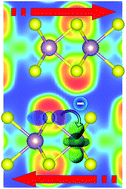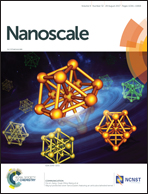Vibrational contributions to intrinsic friction in charged transition metal dichalcogenides
Abstract
Vibrational contributions to intrinsic friction in layered transition metal dichalcogenides (TMDs) have been studied at different charge contents. We find that any deviation from charge neutrality produces complex rearrangements of atomic positions and electronic distributions, and consequent phase transitions. Upon charge injection, cell volume expansion is observed, due to charge accumulation along an axis orthogonal to the layer planes. Such accumulation is accounted for by the d3z2−r2 orbital of the transition metal and it is regulated by the  t2g,eg orbital polarization. The latter, in turn, determines the frequency of the phonon modes related to the intrinsic friction through non-trivial electro-vibrational coupling. The bond covalency and atom pair cophonicity can be exploited as a knob to control such coupling, ruling subtle charge flows through atomic orbitals hence determining vibrational frequencies at a specific charge content. The results can be exploited to finely tune vibrational contributions to intrinsic friction in TMD structures, in order to facilitate assembly and operation of nanoelectromechanical systems and, ultimately, to govern electronic charge distribution in TMD-based devices for applications beyond nanoscale tribology.
t2g,eg orbital polarization. The latter, in turn, determines the frequency of the phonon modes related to the intrinsic friction through non-trivial electro-vibrational coupling. The bond covalency and atom pair cophonicity can be exploited as a knob to control such coupling, ruling subtle charge flows through atomic orbitals hence determining vibrational frequencies at a specific charge content. The results can be exploited to finely tune vibrational contributions to intrinsic friction in TMD structures, in order to facilitate assembly and operation of nanoelectromechanical systems and, ultimately, to govern electronic charge distribution in TMD-based devices for applications beyond nanoscale tribology.



 Please wait while we load your content...
Please wait while we load your content...